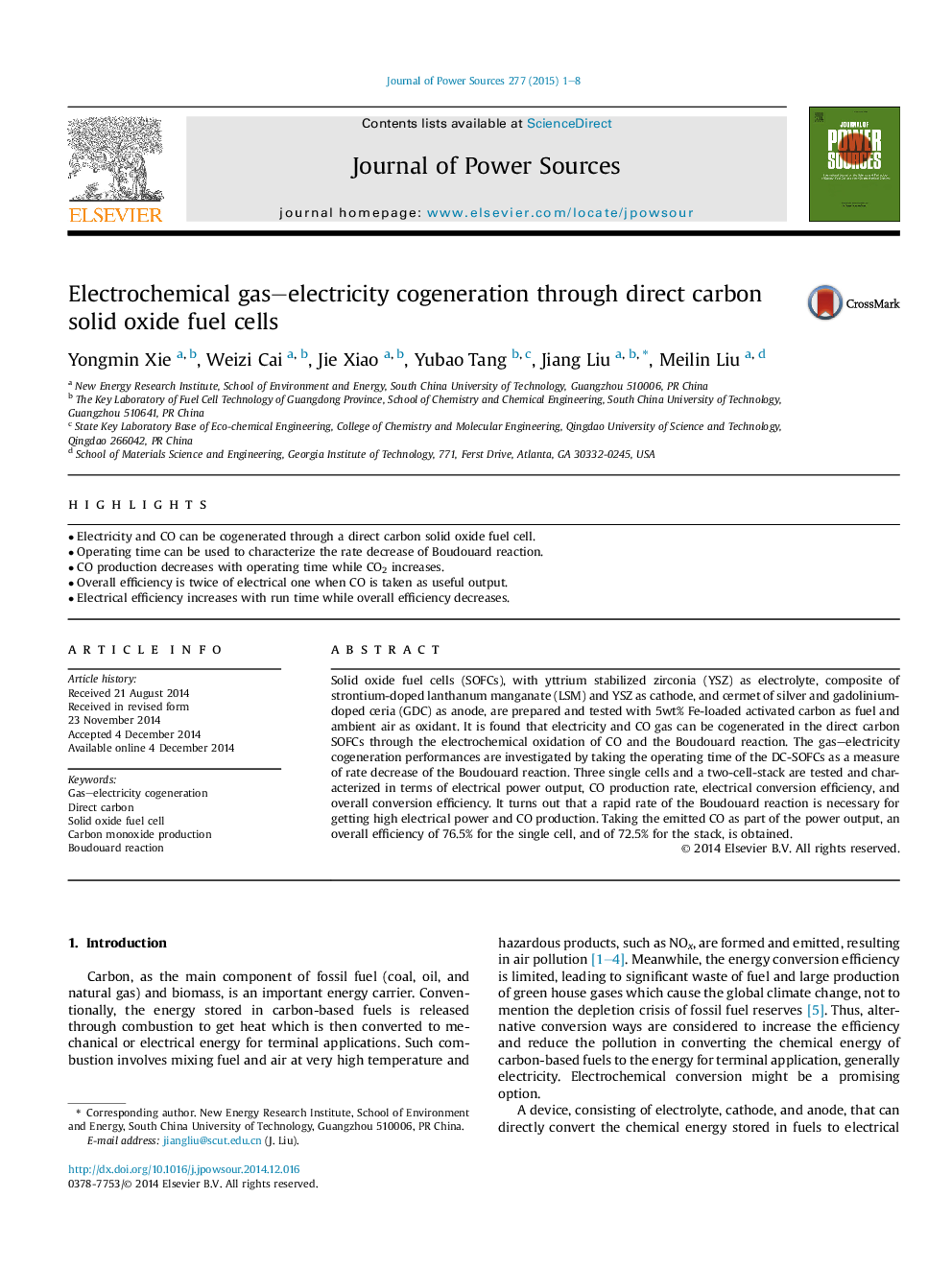| Article ID | Journal | Published Year | Pages | File Type |
|---|---|---|---|---|
| 1286806 | Journal of Power Sources | 2015 | 8 Pages |
•Electricity and CO can be cogenerated through a direct carbon solid oxide fuel cell.•Operating time can be used to characterize the rate decrease of Boudouard reaction.•CO production decreases with operating time while CO2 increases.•Overall efficiency is twice of electrical one when CO is taken as useful output.•Electrical efficiency increases with run time while overall efficiency decreases.
Solid oxide fuel cells (SOFCs), with yttrium stabilized zirconia (YSZ) as electrolyte, composite of strontium-doped lanthanum manganate (LSM) and YSZ as cathode, and cermet of silver and gadolinium-doped ceria (GDC) as anode, are prepared and tested with 5wt% Fe-loaded activated carbon as fuel and ambient air as oxidant. It is found that electricity and CO gas can be cogenerated in the direct carbon SOFCs through the electrochemical oxidation of CO and the Boudouard reaction. The gas–electricity cogeneration performances are investigated by taking the operating time of the DC-SOFCs as a measure of rate decrease of the Boudouard reaction. Three single cells and a two-cell-stack are tested and characterized in terms of electrical power output, CO production rate, electrical conversion efficiency, and overall conversion efficiency. It turns out that a rapid rate of the Boudouard reaction is necessary for getting high electrical power and CO production. Taking the emitted CO as part of the power output, an overall efficiency of 76.5% for the single cell, and of 72.5% for the stack, is obtained.
